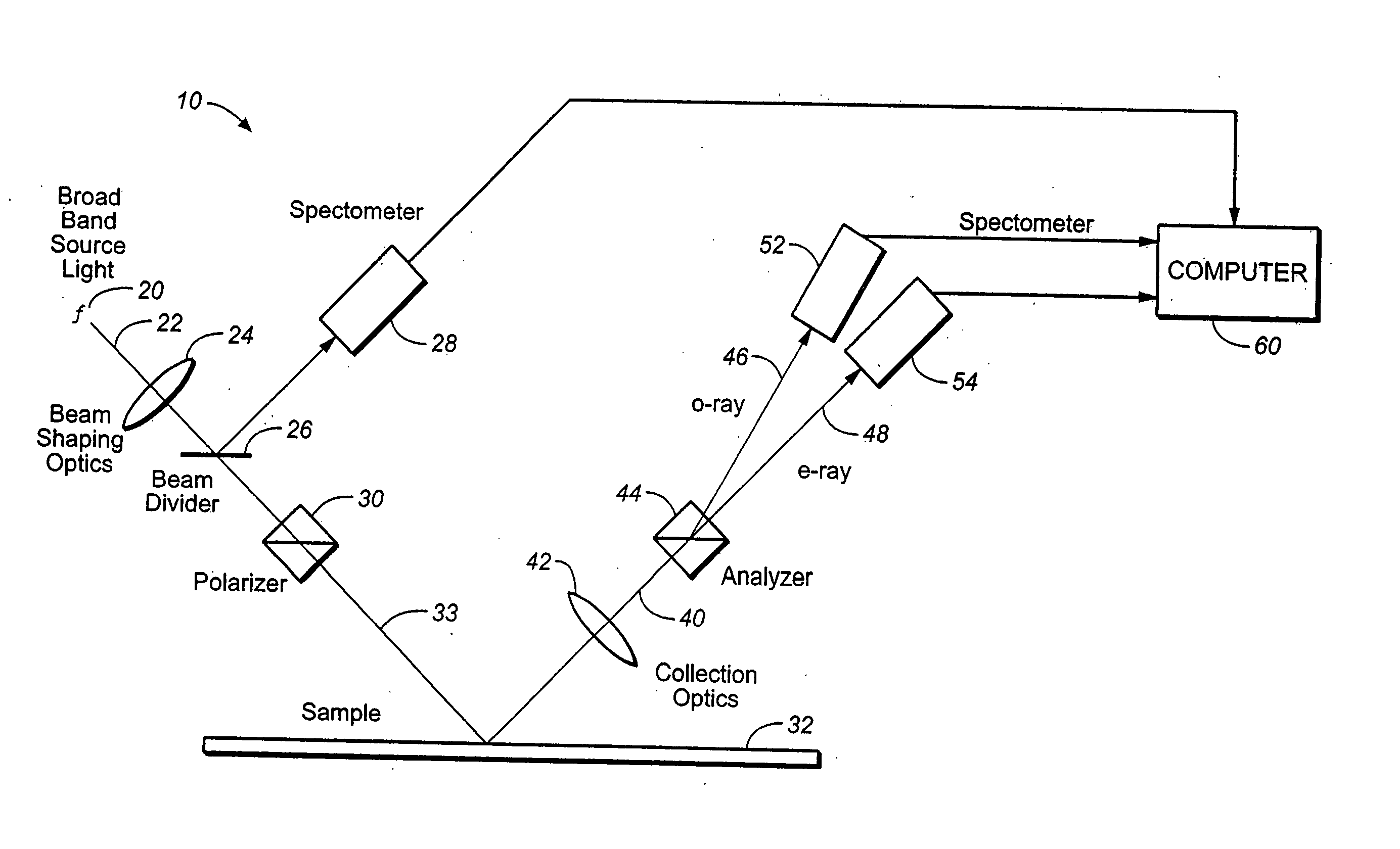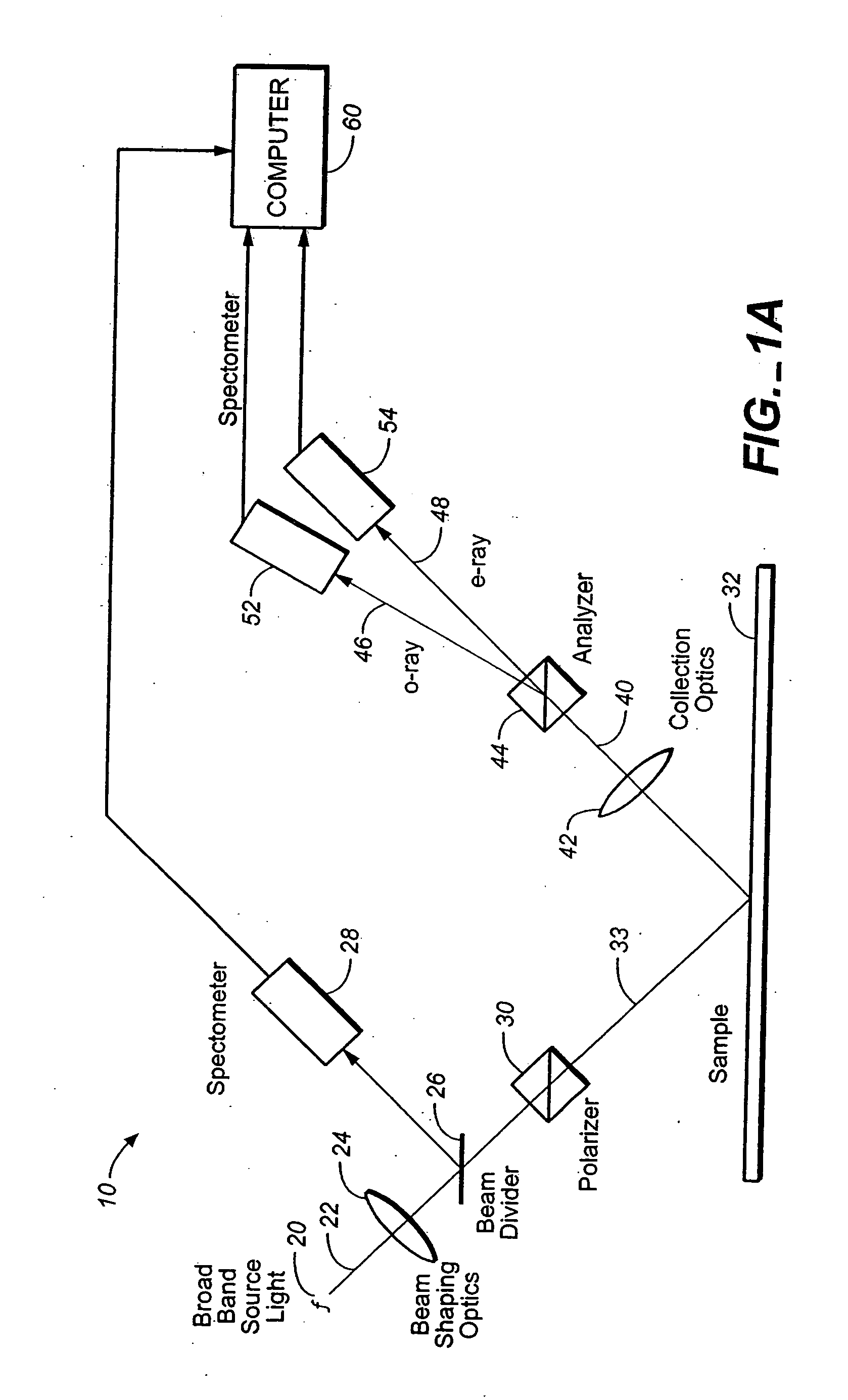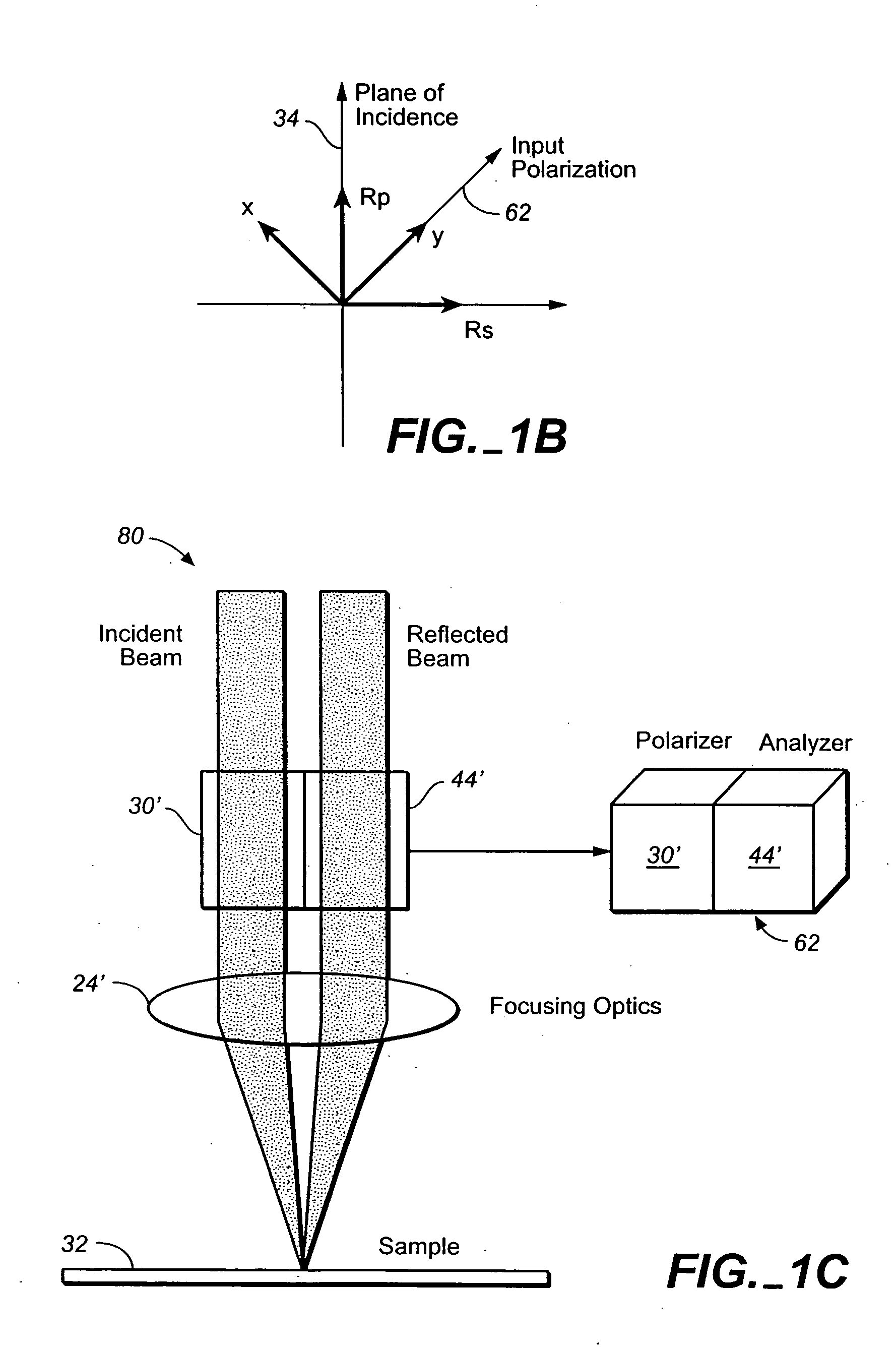System for measuring periodic structures
a technology of periodic structure and metrology system, which is applied in the direction of optical radiation measurement, instruments, polarisation-affecting properties, etc., can solve the problems of large size and footprint compared to the wafer, cumbersome control of sizable apparatus, etc., and achieves the measurement of a single radiation parameter, reduce calculation time, and simple construction
- Summary
- Abstract
- Description
- Claims
- Application Information
AI Technical Summary
Benefits of technology
Problems solved by technology
Method used
Image
Examples
Embodiment Construction
[0026] As shown in FIG. 1, a broadband source of electromagnetic radiation 20 provides a polychromatic beam with wavelength components preferably from 180 to 1000 nm. In one embodiment, source 20 may be a xenon lamp. The beam 22 from source 20 is shaped by beam shaping optics 24. A portion of the beam 22 is diverted by a beam divider 26 to spectrometer 28 for monitoring intensity variations in beam 22 in order to normalize the results of detection. Beam 22 is polarized by a polarizer 30 and the polarized beam is directed to sample 32 to illuminate a periodic structure thereon. Preferably the plane of incidence 34 (see FIG. 1B) of beam 22 is perpendicular to the grating lines in the periodic structure of sample 32. Radiation originating from beam 22 that has been modified by sample 32, such as by reflection or transmission, is collected by collection optics 42 as a collected beam 40 and passed through an analyzer 44 which splits the collected radiation into two rays: an extraordinary...
PUM
 Login to View More
Login to View More Abstract
Description
Claims
Application Information
 Login to View More
Login to View More - R&D
- Intellectual Property
- Life Sciences
- Materials
- Tech Scout
- Unparalleled Data Quality
- Higher Quality Content
- 60% Fewer Hallucinations
Browse by: Latest US Patents, China's latest patents, Technical Efficacy Thesaurus, Application Domain, Technology Topic, Popular Technical Reports.
© 2025 PatSnap. All rights reserved.Legal|Privacy policy|Modern Slavery Act Transparency Statement|Sitemap|About US| Contact US: help@patsnap.com



